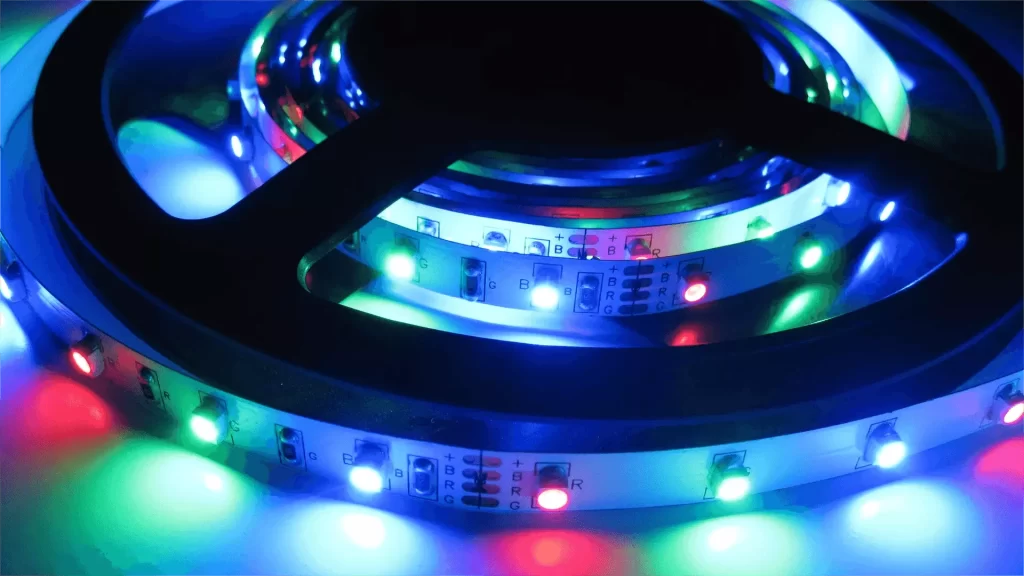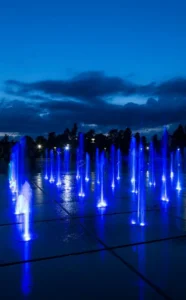- Product Knowledge
Color RGB vs RGBW Lighting: Understanding the Differences
In the realm of illuminating technology, the ongoing debate between RGB and RGBW has a rich and enduring history. Both variants of lighting offer an expansive array of innovative design possibilities and imaginative applications. These LED luminaries stand as pioneers due to their diverse combinations of optimal primary hues – red, green, blue, and white. Each light source emits a distinctive ‘color temperature’ that the human mind interprets in various ways. Understanding the intricacies and distinctions between RGB and RGBW, as well as discerning which aligns best with specific residential needs, has been a pursuit of many. This discourse delves into the mechanisms of RGBW and RGB lighting and delineates their disparities.
Part 1. RGB vs. RGBW: Discerning the Dissimilarities

The discourse surrounding RGB versus RGBW has long been a topic of fervent discussion. Over the years, these lighting variants have found application in diverse lighting scenarios, profoundly influencing lighting design. When inquiring about acquiring a vibrant LED strip from a supplier, distinguishing between RGB and RGBW may lead to confusion. This piece aims to elucidate the discrepancies between RGB and RGBW comprehensively. Here, we elucidate 8 significant distinctions:
Illumination Chip
RGB LED lighting utilizes red, green, and blue as its primary colors, while RGBW incorporates an additional white color. This supplementary white chip enables more precise and vivid color blending alongside the traditional three colors.Chromatic Fidelity Indicator (CFI)
RGBW LEDs boast a higher Chromatic Fidelity Index, facilitating a more faithful replication of the original object’s color. Opting for RGBW equates to superior color rendition.Comprehensive Spectrum
In terms of full-spectrum lighting, RGBW LEDs outperform RGB variants substantially. The inclusion of white color allows for a broader range of nuanced and accurate colors, achieving comprehensive color illumination.Pin Configuration
Distinguishing between RGB and RGBW is facilitated by examining their pin configuration. While RGB LED strips feature 4 pins, RGBW counterparts possess 5 pins, with the additional pin designated for “W.”Luminosity
RGBW LEDs, integrating white pixels (W) with RGB, exhibit heightened brightness compared to RGB LEDs. They also offer superior light transmission capabilities while consuming less power.Utility
When selecting between RGB and RGBW, application-specific considerations are paramount. In general lighting applications, RGB LED strips suffice. However, RGBW offers enhanced color mixing options and superior color fidelity.Control Mechanisms
RGBW LED strips incorporate a 4-in-1 chip comprising red, green, blue, and white, providing users with greater control over their lighting setup. Despite being marginally pricier, these strips afford significantly enhanced illumination possibilities. Both RGB and RGBW LEDs offer versatility in color modulation, enabling transitions across a spectrum including white, red, green, blue, pink, yellow, cyan, and more, through controller adjustments.
Conversely, RGBW LEDs offer superior luminous efficacy and emit purer white light owing to the additional white light diode. Variants such as RGBWW (RGB + warm white), RGBCW (RGB + cool white), and RGBNW (RGB + neutral white) are available, catering to specific illumination needs. RGBW LEDs prove ideal for intricate and precise lighting scenarios, such as those encountered in shopping malls or hotels. For vibrant decorative lighting, RGB suffices, whereas RGBW is indispensable for task lighting necessitating bright white illumination.
Part 2. RGB vs. RGBW: Evaluating Superiority
RGBW LED lights frequently surpass their RGB counterparts.

The inclusion of a white LED chip enhances light quality while concurrently reducing energy consumption and enhancing lighting efficiency. Environmental ramifications must also be considered. With the escalating severity of climate change, opting for energy-efficient RGBW LEDs presents an opportunity to foster sustainable lighting solutions.
Enhanced Light Quality
In theory, RGB LEDs can generate white light by amalgamating red, green, and blue photons. However, this amalgamation entails color blending and diffusion, resulting in an artificial white light. Such pseudo-white light appears enshrouded in mist, leading to a visually unpleasant experience. Conversely, RGBW LEDs yield cleaner white light and diminished saturation of colored light, thereby offering a more visually pleasing experience. Moreover, owing to the incorporation of white light LEDs, RGBW LED luminaries proffer a broader spectrum of distinct color nuances and exhibit enhanced flexibility in color blending.
Reduced Energy Consumption
Conventional RGB LEDs yield lower-brightness light exclusively. Consequently, to augment luminosity, a greater quantity of LEDs becomes imperative. However, escalating LED counts inflate production costs and energy consumption. Conversely, RGBW LED lights produce equivalent luminosity with fewer LEDs.
Heightened Lighting Efficiency
The heightened light transmittance of RGBW LEDs translates to heightened lighting efficiency. Unlike RGB LED luminaries, which absorb and blend some light, RGBW LED lights reflect all incident light without wastage, thereby augmenting lighting efficiency. In essence, RGBW LED lights deliver brighter illumination while consuming an equivalent amount of energy compared to RGB LED lights.
Part 3. Instances Where RGB Lights Excel Over RGBW
RGB lights suffice and prove cost-effective in diverse scenarios where dynamic, colorful lighting effects take precedence, and the necessity for precise white illumination is negligible.
Below are instances where RGB lights commonly find suitability and offer economical solutions:
Ambient Illumination: For creating ambient lighting in spaces such as living areas, bedrooms, or entertainment zones, where the primary objective entails setting a mood through color variation. Decorative Lighting: In decorative contexts, such as accentuating architectural features, shelves, or ornamental elements within a space, RGB lights introduce visual allure sans the necessity for white illumination.
Outdoor Lighting Displays: RGB lights present a cost-effective solution for outdoor applications, such as holiday decorations or landscape illumination, where dynamic color changes are desired.
Thematic Environments: In themed environments like playrooms, artistic spaces, or themed gatherings, where emphasis rests on vibrant and imaginative lighting rather than functional white light. Budget Constraints: In scenarios where budget constraints loom large and precise white illumination isn’t imperative, RGB lights offer a more economically viable alternative to RGBW luminaries.
In conclusion, although both RGB and RGBW illumination systems proffer versatility and aesthetic allure, they cater to disparate requisites within the illumination sector. RGB excels in fashioning vibrant, dynamic color effects, whereas RGBW furnishes enhanced color fidelity and luminosity control, rendering it conducive to a wider spectrum of applications. By assimilating the disparities amidst these methodologies, illumination professionals and aficionados can make discerning choices that align with their specific mandates.



